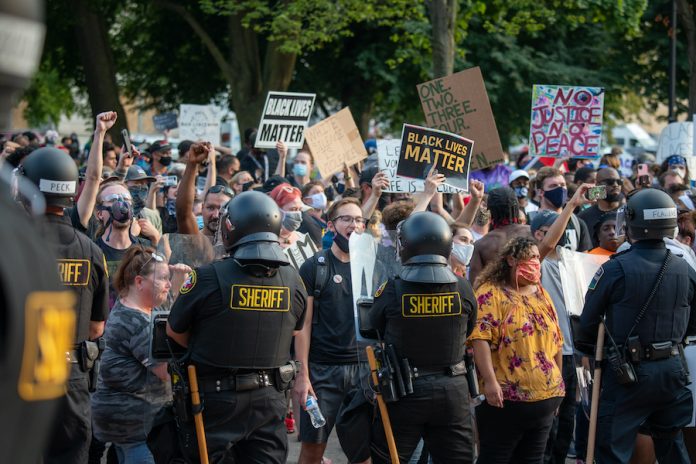After 27 hours of deliberations, the verdict was read. “As to the first count of the information … we, the jury, find the defendant, Kyle H. Rittenhouse not guilty.”
The same verdict was repeated for all charges. Kyle Rittenhouse, who killed two people and injured a third during a Black Lives Matter protest in Kenosha, Wis. was found not guilty on all counts.
In the summer of 2020, Black Lives Matter protests erupted across the country in response to the murder of George Floyd. Floyd, an unarmed Black man, who died with a white police officer’s knee on his neck. Activists were calling for justice for Floyd and the countless other Black people who have been the victim of police violence.
As the summer went on the movement’s epicenter moved to different cities as the news spread of yet another Black individual harmed by police violence. Late in the summer, the movement’s center shifted to Kenosha, Wis. after police shot and partially paralyzed Jacob Blake.
The protests in Kenosha were attended by thousands of people from across the country. However, after law enforcement officials began tear gassing protestors, protestors responded by throwing water bottles and fire crackers. This violence caused multiple fires to start and buildings to burn.
The heightened news coverage of the violence led to dangerous generalized rhetoric of the protesters. BLM protesters were often depicted as violent and destructive, when in actuality, most protesters remained peaceful. This rhetoric led outside groups who often opposed the Black Lives Matter movement to feel the need to intervene.
What set the protests in Kenosha apart from others was the large presence of armed individuals who came to assist law enforcement. A Facebook group entitled the “Kenosha Guard” gained a following during the protests. The group, which sought out “armed citizens to protect our lives and property,” traveled to Kenosha with the hopes of protecting the city from who they referred to as “evil thugs.”
Members of these self-proclaimed militias, including then 17-year-old Rittenhouse, hoped to act as an extension of the law enforcement despite having no law enforcing powers. Some law enforcement members can even be seen thanking members of these groups for their support and giving them water in videos from the protests.
The inability for law enforcement to reject the militia group’s involvement outright allowed the protests to quickly become more volatile. The influx of heavily armed people without any attachment to law enforcement caused tensions to rise.
Rittenhouse, armed with an AR-15, traveled to Kenosha on Aug. 25, 2020. He considered himself a member of a militia that traveled to Kenosha to protect businesses and people. Later that night he shot Anthony Huber and Joseph Rosenbaum, and injured Gaige Grosskreutz.
Rosenbaum had allegedly chased Rittenhouse into a car lot and threw a plastic bag at him, leading Rittenhouse to shoot and kill him. After the first shooting, Rittenhouse ran away and was shortly after pursued by several protesters who thought he was an active shooter. He then shot and killed Huber and injured Grosskreutz as they were trying to apprehend him.
Rittenhouse’s defense claimed that he fired in an act of self-defense, which was ultimately believed to be true by the jury. Wisconsin’s self-defense laws allow an individual to take action if they feel they are threatened, even if they do not attempt to retreat or neutralize the situation. Unlike most states, Wisconsin allows an individual to use excessive force even if they provoked the violent situation. This made it very difficult for the jury to prove that his actions were not out of self-defense.
Although frustrating for many, the jury was not deciding whether Mr. Rittenhouse’s actions were overarchingly fair. They were posed with a certain set of laws and asked to apply the given facts to them.
However, the problem is not with what the jury concluded, it is with the systemic disparities in our justice and law enforcement systems.
After Rittenhouse had shot the two men he ran towards law enforcement with his hands up, still in possession of the AR-15. As he was approaching them, the law enforcement officials ordered him to get out of the way so they could find the shooter.
The national guard and other officials never considered that the white 17-year-old walking towards them with a weapon could be the shooter. He was immediately discounted and was provided with the luxury of being able to return home and turn himself in. The biases of the law enforcement officials that night were clear, just as they were when Floyd was killed and Blake was shot.
The disappointing story of Rittenhouse showcases many of America’s problems, from police brutality to questionable laws that enable violence. We as Americans have an obligation to fight to reform these issues to ensure a more just future for generations to come.
Claire Schad is an Opinion Staff Writer. She can be reached at schadc@uci.edu.


